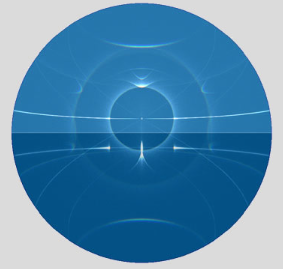Subhorizon arcs
Subhorizon Arcs: A Hidden Phenomenon in the Sky
When we think of atmospheric optics, our minds often conjure up images of stunning halos, rainbows, and other celestial displays that occur above the horizon. However, there is a lesser-known phenomenon that takes place beneath the horizon - subhorizon arcs. These elusive optical phenomena mirror the beauty of their above-horizon counterparts but occur within the very crystals that form them.
Unlike traditional halos, which are formed by light being reflected off separate crystals, subhorizon halos are created through an additional reflection from a lower horizontal face within a crystal. This unique mirroring effect produces the subhorizon counterpart of an ordinary plate crystal halo.
One fascinating aspect of subhorizon arcs is that they do not require multiple scattering or reflection by separate crystals. Instead, the subtleties of refraction and ray paths within a single crystal create these captivating displays. This distinction sets subhorizon arcs apart from other atmospheric optics phenomena and adds to their allure.
To witness subhorizon halos, one must look beyond the traditional horizon line. They can often be observed from vantage points such as aircraft, hills, or mountains. In some cases, subhorizon arcs can even be seen in snow and ground frosts, adding an extra layer of intrigue to these already mysterious phenomena.
The similarity between subhorizon arcs and their above-horizon counterparts is striking, but they are not identical. The unique conditions that give rise to subhorizon arcs result in subtle differences in their appearance and characteristics. Observers who have had the privilege of witnessing both types of halos note these nuances and appreciate the distinct beauty each brings to the sky.
While subhorizon arcs may be lesser-known and less frequently observed compared to their above-horizon counterparts, they serve as a reminder of the endless wonders that exist within our atmosphere. These hidden gems of the sky offer a glimpse into the complex interplay of light, crystals, and atmospheric conditions that create such breathtaking optical displays.
In conclusion, subhorizon arcs are a fascinating and captivating phenomenon within the realm of atmospheric optics. Their unique formation within a single crystal, distinct from traditional halos, sets them apart. Although less commonly observed, the opportunity to witness these subhorizon halos from specific vantage points or during certain weather conditions adds to their allure. As we continue to explore and understand the complexities of our atmosphere, subhorizon arcs serve as a reminder of the hidden beauty that awaits us in the sky.

Halos beneath the sky. A subsun, sub parhelia, subparhelic circle and a subcircumzenithal arc shine below the horizon. Continuations of 'ordinary' arcs go beneath the horizon also. Fisheye simulation centered on the horizon, sun 10� high.
Imagine a halo display mirrored in a lake. Subhorizon halos are similarly formed except that the mirroring is inside the very crystal making the halo. An extra reflection from a lower horizontal face produces the subhorizon counterpart of an ordinary plate crystal halo.
No multiple scattering or reflection by separate crystals is needed.
Subtleties of the refraction and ray paths make subhorizon arcs very similar to but not identical to their above horizon counterparts.
Look for subhorizon halos from aircraft, hills or mountains. Sometimes they can even be seen in snow and ground frosts.
Note: this article has been automatically converted from the old site and may not appear as intended. You can find the original article here.
Reference Atmospheric Optics
If you use any of the definitions, information, or data presented on Atmospheric Optics, please copy the link or reference below to properly credit us as the reference source. Thank you!
-
<a href="https://atoptics.co.uk/blog/subhorizon-arcs/">Subhorizon arcs</a>
-
"Subhorizon arcs". Atmospheric Optics. Accessed on December 22, 2024. https://atoptics.co.uk/blog/subhorizon-arcs/.
-
"Subhorizon arcs". Atmospheric Optics, https://atoptics.co.uk/blog/subhorizon-arcs/. Accessed 22 December, 2024
-
Subhorizon arcs. Atmospheric Optics. Retrieved from https://atoptics.co.uk/blog/subhorizon-arcs/.